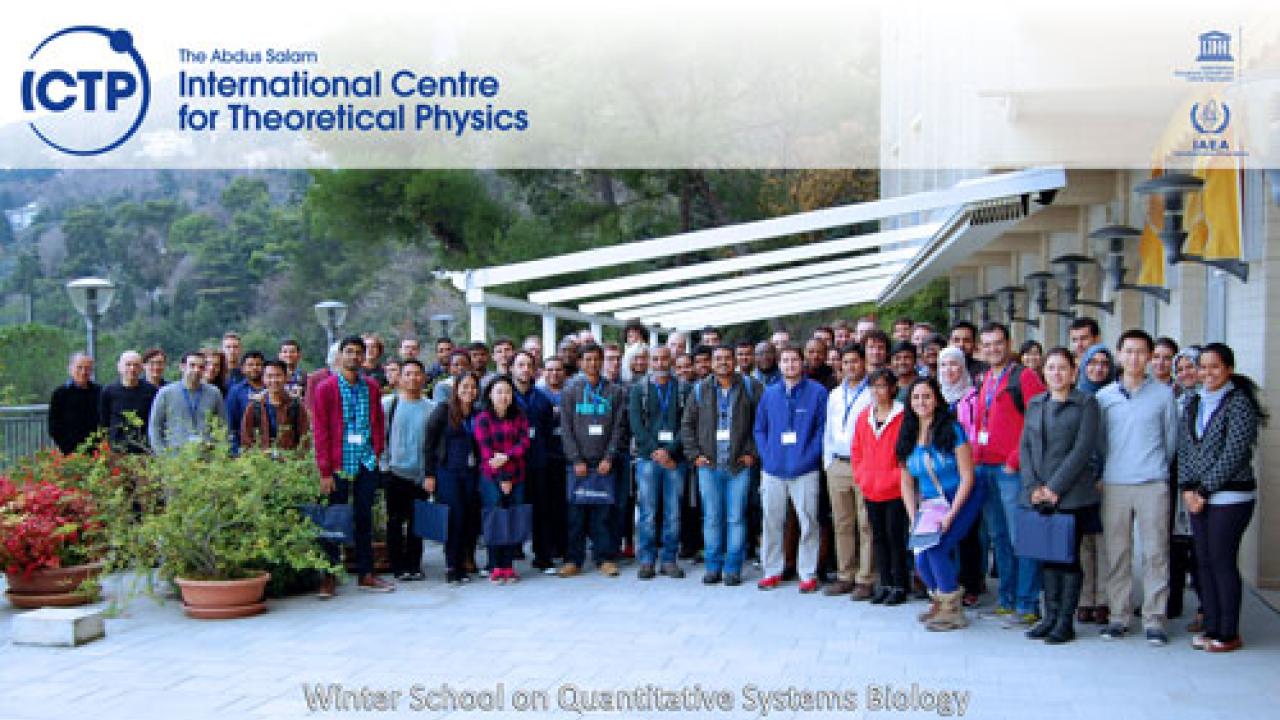
Physicists and biologists used to look at the world through widely different lenses, not only in their subject matter focus, but also in how they approached fundamental questions. Now, biology and physics are blurring together, with the emergence of the field of quantitative biology. A recent conference on quantitative biology at ICTP revealed the wide variety of ways biology and physics have intertwined.
This may seem like an unusual topic for a theoretical physics institute like ICTP to host a school on. However, recent technology has changed how useful physics and physicists' methods can be in answering the many open questions in biology. "In the past, the experimental data that biologists collected was not easily converted into numbers," says Eric Wieschaus, 1995 Nobel Laureate in Physiology or Medicine and speaker at the school. "But digital microscopy obviously makes everything a number, and suddenly everything is numbers. With all of these numbers, there's a sense that biology is more ready to tackle greater complexity, but we need the mathematical skills and the models to be able to do that."
It's not only an onslaught of numbers that is changing what questions biology can answer and how, but quantitative aspects are also changing how biologists can approach problems. "Biochemistry, for instance, has been quantitative for a while, but there was never this view that you could have a model and a big idea that you could then test with numbers," says Stefano Di Talia, co-organizer of the ICTP winter school and biologist at Duke University. "Biochemistry just measured numbers as part of experimental data, they weren't coming from a model."
"Some biologists think that physics can offer good conceptual frameworks, while other biologists see physics as offering just possible tools," says Di Talia. "The people we tried to invite to this school are not only thinking of physics as a tool, but instead using physics to understand deeper principles in biology."
If this was the common denominator for school participants, they were diverse in quite a number of other ways. School co-director and ICTP physicist Antonio Celani pointed out the geographic diversity of participants, who hailed from 35 countries, but also the scientific diversity. "While this a great time for physicists getting into biology, we could probably also say it's not clear which is the best way to do it, which is very exciting," says Di Talia. It was partially because of this that Celani and Di Talia invited scientists working on a range of model organisms, from C. elegans to zebrafish to flies to mice. Participants come with experience on a range of scales, as well, with some dealing with huge datasets at the population level, and some making very detailed measurements of molecular events. Not all participants have done bench work in the lab, either, with a spectrum of scientists from purely physics-trained to purely biology-trained attending.
"I'm in the middle of the spectrum," says Victoria Deneke, a fourth-year PhD student in Di Talia's lab at Duke University and school attendee. Her background is in chemical engineering, training that she considers essential. "I feel like this is where biology is going — many biologists are trying to get more quantitative. With advances in microscopy things are no longer static in still images, they're dynamic and moving. You need quantitative skills to analyze the vast amount of data this produces."
For others, the school was an introduction or refresher in various ways: a physicist could be learning about open questions in biology, or a biologist learning about how physicists think. "This conference is a kind of bridge for me," says Hiba Brader Fatafta, a recently graduated master's student from Palestine. Her background is in physics, and she's interested in studying biological systems. "Right now I know little about biology and I want to enhance this knowledge." Fatafta is interested in a PhD in biophysics: she's fascinated with how proteins fold and signals flow in cells. The school has offered her not only knowledge, but also networking opportunities and advice about how to get into biophysics.
"The first few days it was difficult for me, I didn't know what a lot of the biological terms meant so it was difficult to follow the lectures. I'm here to understand, so I did some studying and now they're easier to follow," says Fatafta. "It turns out there are lots of people like me: at first I thought I was a stupid person here, but then I asked some people if they understood, and said no, we are physicists, it's hard for us too."
"This is a very unique conference," says Deneke, discussing the mix of physics and biology presented in the lectures. For her, the physics was less familiar than the biology. "It's been great to get into the more physics-heavy aspects, reviewing the mechanics of tissues."
"Science is always social," reflects Wieschaus. "I think science is always better the more social we are, and when we are able to listen to and interact with a broader population of people, the science gets better."
-- Kelsey Calhoun
















